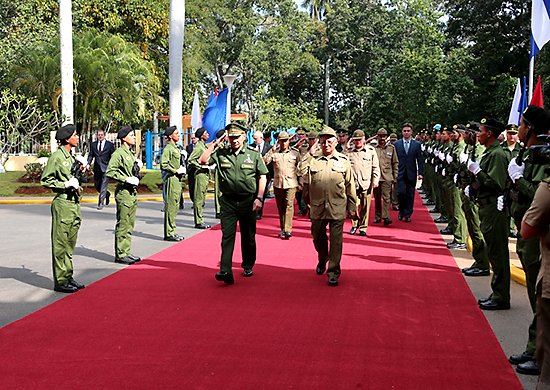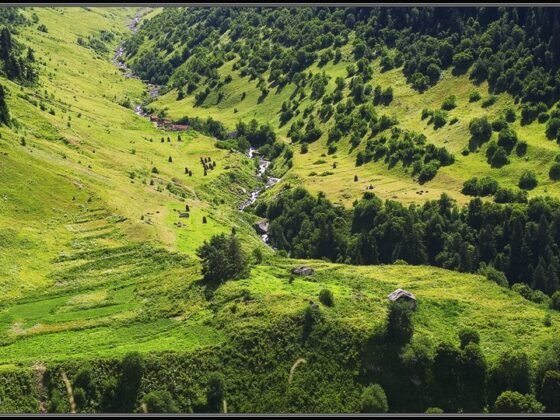Albeit overshadowed by Yevgeny Prigozhin’s shocking dash to Moscow, on June 23, 2023, The Insider published a report claiming that Russia was reopening its listening station in Lourdes, Cuba. Closed by Putin himself in 2001, the station played an important role in Russia’s spying on the US during the Cold War before becoming mostly inactive from 1991. The reopening illustrates the direction that Russian foreign policy has been taking in Latin America since 2022: Russia has been falling back on longstanding partnerships to consolidate its presence in the Western Hemisphere.
While the region’s states have largely condemned Russia’s full-scale invasion of Ukraine, their traditional non-interventionism has meant that Latin American governments have not tended to shut the door on Russian influence. RT, Sputnik, and their affiliates continue to broadcast throughout most of Latin America, spreading Russian disinformation calculated to undermine support for international norms and for Ukraine, as well as the standing of the US in the region. Likewise, Moscow is mobilizing sleeper cells and conducting signal intelligence operations across the region using its GLONASS system, with Mexico a particular hub for covert activities targeting the US. Russian energy companies, too, have expanded their reach in the region, potentially impacting exports to Europe. Meanwhile, Russia’s longtime autocratic partners in Latin America—chiefly Cuba, Nicaragua, and Venezuela—have allowed Russia to establish military bases on their territory and advocated for Russia in regional fora. Overall, Moscow’s revisionist agenda threatens to undermine the constitutional order of the region’s democracies, the development of democracy in the region’s Russia-aligned autocracies, and Ukraine’s international reputation.
A Bad Hand
Latin America, like other regions of the Global South, has not joined the international sanctions regime on Russia, with only Chile and Costa Rica having introduced restrictions on Russia. However, Russia’s decline in diplomatic standing has been palpable. Most countries of Latin America have condemned Russia’s full-scale invasion; they also voted overwhelmingly in favor of the UN Security Council resolutions condemning the war. In fact, fewer Latin American and Caribbean states voted against, abstained, or missed the vote in 2022 than the 2014 vote condemning the “annexation” of Crimea; the numbers were five and 20, respectively.
Similarly, it is evident that Russia’s popularity has fallen. For all its vaunted media reach across the Spanish-speaking world, Russia’s reputation in Latin America has been declining for years. Russia’s vaccine diplomacy had mixed results overall and completely failed to stop this decline; the war has wiped away whatever remained of Moscow’s reputation. A 2022 global Gallup poll carried out after Russia launched its full-scale invasion shows that Latin America is behind only Europe and North America in average disapproval of Russia. Moreover, Latin America also featured the sharpest drop in Kremlin approval across all regions polled since the full-scale war began.
Some of Russia’s levers of influence are absent in Latin America. Arms exports, for instance, tend to be a powerful tool for Russia to cultivate the sympathy of foreign militaries. However, Moscow has not been able to use this tool to expand its presence in Latin America. According to SIPRI, Russia has failed to capture the growing markets of Brazil and Chile, the only two countries with ongoing large-scale modernization programs. Traditional customers in the region—such as Cuba and Venezuela—have paused or been unable to continue their purchases from Moscow. Some countries have also begun to substitute for Russian products or services in the security sphere.
More broadly—and unlike the US, Europe, and China—Russia cannot count on economic clout to anchor its position in Latin America. With a few exceptions, Russian trade and investment have been stagnating and falling since the late 2010s. At that time, Russia was already struggling to find a viable regional hub for its commercial interests, as neither the large Brazilian economy nor the sympathetic regime in Venezuela were able to perform that role (albeit for different reasons).
Making the Most of It
Still, Russia is not powerless in Latin America. There are some factors in its favor at play. First, Chinese loans and the country’s shared anti-democratic outlook have made Beijing’s engagements with the region a positive background factor for Russia’s own presence. Second, the foreign policy of Latin American states tends toward non-interventionism and relies primarily on international law to shape global affairs. As such, despite rejecting the war, Latin American governments have not tended to shut the doors to Russian influence. For example, only Costa Rica and Uruguay have halted transmissions of the Russian propaganda channel RT. Third, Latin America’s “democratic recession” is being promoted by many politicians (and their supporters) sympathetic to anti-democratic and pro-Russian views. This “illiberal confluence” benefits Russia’s presence in the region. Finally, Russia’s long-term autocratic partners—Cuba, Nicaragua, and Venezuela—have held fast to power despite international condemnation and popular resistance.
Leaning on Old Friends
As evidenced by Lavrov’s 2023 tour, Russia will continue to rely on its long-standing partners to project influence in Latin America. Cuba, Nicaragua, and Venezuela each depend on Russia to some extent. Moscow offers resources to support the security of their regimes and help them to avoid sanctions and complete diplomatic isolation. Russia’s cybersurveillance capabilities, financial and technology industries are not of the highest caliber, but they provide an “off-the-shelf” solution for authoritarian regimes. There are hints that these engagements will increase. During Lavrov’s stay in Caracas, he and his Venezuelan counterparts reviewed all aspects of the bilateral relationship, including the hundreds of agreements the two governments have signed over the years.
In return, these three countries are allowing Russia to use their territories to project power in the Caribbean basin, close to the US. Military power is a prominent feature of this relationship: the Russian navy has the right to make ports of call and there is a constant rotation of Russian security personnel stationed in Nicaragua and Venezuela. Since 2017, the Russian Interior Ministry has run a facility in Managua to train local police and security services staff, allegedly to combat drug trafficking. But reports suggest that training focuses instead on surveillance and repression. Officers from throughout Central America and the Caribbean have received instruction there.
Beyond hard power, these three countries have amplified Russia’s regional diplomacy. During his four-day Latin America tour in April 2023, Lavrov met in Venezuela with officials from Bolivia and St. Vincent and the Grenadines, two prospective Russian partners. They also advocate for Russia in regional fora. For example, Nicaragua was the sole state to dissent from the EU-CELAC final declaration on “the war in Ukraine,” an already watered-down declaration in a document ultimately focused on economic matters.
Energy
Despite Russia’s small economic footprint in the region, a multitude of signs suggest that Moscow seeks to expand its presence in the Latin American energy sector. Having failed to become a regional arms provider, Russia’s move into the strategic energy sector leverages Moscow’s relative advantages in this area. It also increases the competition faced by Western companies and expands Moscow’s influence in this potential supplier for energy-hungry Europe. Recent export data are revealing. In 2023, Russia dramatically increased its diesel deliveries to Brazil, going from 74,000 tons in 2022 to 663,000 in the first three months of the year alone. While this trade might fluctuate, the trend is part of larger changes to global energy markets and has the potential to entrench a connection between Russia and Latin America.
With help from Moscow, Russian companies—among them Rosneft, Lukoil, Gazprom, Novatek, and Rosatom—have expanded their activities in the region in recent years. In March 2023, Rosneft CEO Igor Sechin visited Caracas and Havana to meet with the two countries’ respective energy ministers and discuss continued cooperation. Rosneft is no longer formally present in Venezuela, but Sechin’s visit hints at renewed overt cooperation. Russia’s presence in Cuba’s energy sector, meanwhile, is minimal; reports suggest that Sechin’s visit might have been related to the country’s fuel shortage.
Since gaining a presence in Mexico in 2014, Lukoil has acquired several tenders in the country. In 2022, Lukoil spent $700 million for a 50 percent stake in an offshore oil project (in partnership with the Mexican company PetroBAL). For its part, following a 2015 series of state-level agreements with Bolivia, Rosatom has been building a nuclear research complex at El Alto since 2021 (commissioned in 2017). The complex is now expected to commence operations in 2024. In October 2022, Rosatom further won a Brazilian tender to provide uranium fuel for the Angra nuclear energy plant.
Some attempts have gone nowhere. In 2022, Novatek reportedly offered Argentina the technology to build an LNG plant, but this came to nothing. Gazprom, present in Bolivia since the 2000s, failed to scale up its operations; its local offices were left empty by 2022. Rosatom, despite its relative success in the region, is present in Bolivia only thanks to the leveraged financing of the Bolivian government. Overall, Latin America’s energy sector is promising for Moscow but still rife with risks and dead ends for Russian companies.
Covert Activities
Latin America is well-trodden terrain for Moscow’s intelligence agencies. Recent reports suggest an acceleration of these activities, including in countries not within the circle of traditional partners. Faced with the dismantling of its espionage networks in Europe, Moscow is mobilizing its sleeper cells in Latin America. Indeed, Russian agents under deep cover in Europe have often acted with passports from Latin American countries, including Brazil and Uruguay.
Mexico has emerged as a hub for these activities. In 2022, a U.S. general singled out Mexico as the country with the highest number of Russian intelligence officers stationed overseas. In 2023, it was reported that Mexico had served as the transit point for Russian intelligence to Cuba. Furthermore, the head of the Cuban rezidentura (intelligence station abroad) was previously the head of the Mexican one.
Beyond human intelligence, Moscow’s signal intelligence operations are active throughout the region. Brazil and Nicaragua host several GLONASS (Russia’s alternative to GPS) ground stations, all run and kept under secrecy. The Nicaraguan station—located in Managua—is suspected of monitoring the communications of the local U.S. embassy. New stations are being considered in Argentina, and Mexico signed a cooperation agreement with GLONASS last year (although the Mexican government vehemently denied the opening of a new station on its territory). Similarly, Russia’s military runs six radar installations in Venezuela, which are meant to enhance the regime’s surveillance of the opposition and of Colombia’s military movements.
Another key element of Russia’s covert activities is the spread of disinformation. In addition to Russia’s propaganda networks, namely RT and Sputnik, Russian embassies have actively been amplifying Kremlin media across their platforms. Some of these efforts are directed toward Latin America. In fact, while Moscow-controlled media have failed to shape perceptions about Russia, ventures such as RT, Sputnik, and their affiliates (including co-opted local media and influencers) have met with success in shaping the conversation about Russia’s aggression against Ukraine. Russian disinformation in the region is primarily directed at undermining the standing of the US: in 2020, the internationally sanctioned Internet Research Agency ran an office in Mexico involved in creating and disseminating disinformation targeting the US.
Conclusion: Implications of Russia’s Moves
Unlike the Soviet Union or present-day China, Russia cannot offer Latin America large-scale economic cooperation. Instead, Moscow has emphasized intelligence and propaganda as two measures anchoring its presence in the region, with energy a growing interest shaping Russia’s regional agenda. As during the Cold War, affinity with autocratic regimes is also bolstering ties.
Russia’s moves in Latin America have implications for the region, for the US, and for Europe. For the region, Russia’s activities render its “neutrality” policy potentially untenable. As Russia exploits the openness of the countries of the region, these countries’ Western partners—especially the US—may end up seeing them as staging grounds for Russian aggressive measures. Energy production may prompt concerns about Russia’s potential manipulation of exports to Europe. In addition, Russian covert activities may undermine the constitutional order of the region’s countries, as the 2020 Colombian expulsion of Russian spies demonstrated.
For the US and Europe, Russia’s activities in Latin America present two challenges. First, Cuban, Nicaraguan, and Venezuelan repression and violation of international norms will continue to receive Russian support, hindering democracy and entrenching regimes that share Moscow’s revisionist orientation. Second, Russian propaganda and messaging will continue to undermine popular support for international norms, for Ukraine, and for Western states themselves, especially the US. Agreement with Moscow’s close regional partners might not be possible in the short term. Yet Latin America overall should not be discounted. Experience has shown that there are ways to get countries from the Global South to back Ukraine, albeit discreetly and within their means. As UNGA votes and opinion polls show, there is scope for Ukraine and its Western partners to work with sympathetic Latin American governments.
Ivan U. Klyszcz is Research Fellow at the International Centre for Defence and Security (ICDS), in Tallinn, Estonia.











